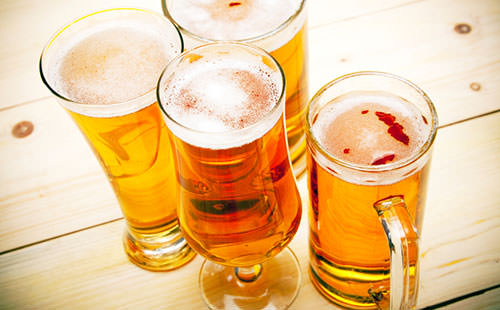A new study published in the Northwestern University Health Psychology journal suggests people who regularly exercise drink more alcohol afterward.
This is the only study to use smartphone technology and a daily diary approach for self-reporting physical activity and alcohol use.
“Monday through Wednesday people batten down the hatches and they cut back on alcohol consumption,” said David E. Conroy, lead author of the study. “But once that ‘social weekend’ kicks off on Thursdays, physical activity increases and so does alcohol consumption.”
Conroy is a professor of preventive medicine and deputy director of the Center for Behavior and Health at Northwestern University Feinberg School of Medicine. He also is a faculty affiliate of the Methodology Center at The Pennsylvania State University, where the research was conducted.
The study was published online in Health Psychology, an American Psychological Association journal.
“Insufficient physical activity and alcohol use are both linked to many health problems, and excessive alcohol use has many indirect costs as well,” Conroy said. “We need to figure out how to use physical activity effectively and safely without having the adverse effects of drinking more alcohol.”
One hundred and fifty study participants, ages 18 to 89, recorded their physical activity and alcohol use in smartphones at the end of the day. They did so for 21 days at a time, at three different times throughout one year.
Other studies on physical activity and alcohol relied on people self-reporting their behavior over the past 30 days.
“In this study, people only have to remember one day of activity or consumption at time, so they are less vulnerable to memory problems or other biases that come in to play when asked to report the past 30 days of behavior,” Conroy said. “We think this is a really good method for getting around some of those self-report measurement problems.”
The previous studies, which relied on 30-day self-reporting, concluded that physically active people tend to drink more alcohol — something this study did not find.
“We zoomed in the microscope and got a very up-close and personal look at these behaviors on a day-to-day basis and see it’s not people who exercise more drink more — it’s that on days when people are more active they tend to drink more than on days they are less active,” Conroy said. “This finding was uniform across study participants of all levels of physical activity and ages.”
Through future studies at the Center for Behavior and Health at Feinberg, Conroy hopes to discover what drives people to drink more on days they exercise more.
“Perhaps people reward themselves for working out by having more to drink or maybe being physically active leads them to encountering more social situations where alcohol is consumed — we don’t know,” Conroy said. “Once we understand the connection between the two variables we can design novel interventions that promote physical activity while curbing alcohol use.”
Agencies/Canadajournal
 Canada Journal – News of the World Articles and videos to bring you the biggest Canadian news stories from across the country every day
Canada Journal – News of the World Articles and videos to bring you the biggest Canadian news stories from across the country every day



